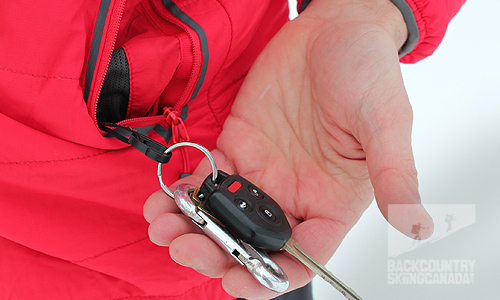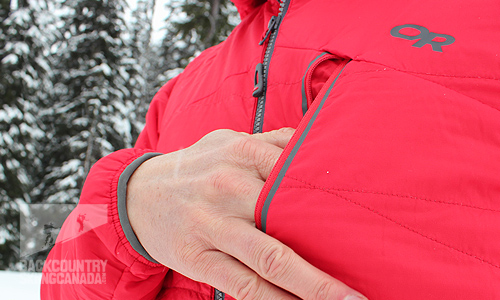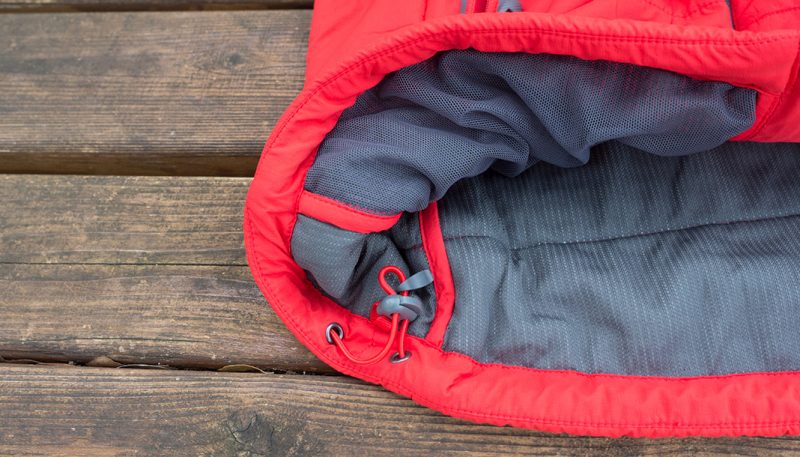

- #UBERLAYER HOODED JACKET REVIEW UPDATE#
- #UBERLAYER HOODED JACKET REVIEW SKIN#
- #UBERLAYER HOODED JACKET REVIEW ZIP#
The hood prevented heat from leaving the head, and the coat’s fit though the core and underarsm allowed for heavier baselayers, furthering reasons to include this piece when heading into possibly burly alpine environments. While hard to judge the movement of insulation in practical testing, testers felt safe in saying, “It must work, because this thing is warm.”


As a result, this is a very warm jacket, especially given its size and intended use cases. Instead of continuous stitching, the technique repeats a pattern of staggered, stand-alone stitch-lines. Patagonia assembled the Pertex Quantum shell in a new way, developing a patent-pending quilt pattern that reportedly does a superior job in controlling the movement of insulation when compressed, or after several washes and prolonged use. While very light and innovative, the Micro Puff Hoody is first and foremost a jacket designed to keep a person safe from cold. It did so adequately, but isn’t as effective as a drawcord-clearly a weight-conscious design decision. In lieu of hem tighteners, Patagonia employed an elasticized band of material to minimize wind and cold from entering at the waistline. The collar zips above chin level and the hood dropped to just above the tester’s eyebrows to reduce face exposure. The hood snugs comfortably around the head, even with a climbing helmet, and the cuffs stayed in place and proved to be the ideal length for a medium-build, 170-lb tester. It’s not quite as tough against wind, however.

The Patagonia Micro Puff Hoody performed as well as the Black Diamond First Light Hoody in keeping its tester warm when things got wet. The shell is also coated with a DWR finish. This specific ripstop product is often used to accompany insulating jackets because its minute thread size helps trap air, aiding a jacket’s ability to keep a person warm. It fulfills its promise of staying warm when subjected to the type of temporary moisture a jacket in this category would commonly experience-wet snow, tent condensation, surprise rain, etc.Ī ripstop nylon used by several brands, a 10-denier Pertex Quantam, was chosen as the shell material to encase the innovative insulation. Although it's not a deal breaker, it's still a very comfortable jacket that offers many other features and I am very happy with my purchase.Patagonia developed the 100% polyester PlumaFill to pack the Micro Puff Hoody with a super lightweight synthetic insulation that packs very quickly and rebounds almost instantly when unleashed from its stuff pocket. Outdoor Gear Lab has noted this as an issue as well and I can confirm that that's true. I'm not sure if that was an issue with size, I think it's an issue with the design. One thing I was really bummed about was that stuffing the jacket into its own pocket was really hard.
#UBERLAYER HOODED JACKET REVIEW UPDATE#
I'll update this review after I give it a try but I'm just judging by the size of the hood. I'm sure this could fit a climbing helmet, but probably not a snowboard helmet. Went for a stroll downtown in ~35 degree weather and didn't even notice the cold in my chest. Personally, I would've loved to see them use a different material like they did the OR Cathode jacket.īreathability is better than I expected. It's the kind of material that catches really easy.
#UBERLAYER HOODED JACKET REVIEW SKIN#
The pockets are nice and warm, but I can see how it'd be irritating when you have dry skin on your fingers.
#UBERLAYER HOODED JACKET REVIEW ZIP#
While I could zip up the jacket, it was a relatively tight fit so I exchanged it for a medium and now it fits perfectly. I ordered a size small thinking it would be the same fit. I got this jacket when it was on sale for $188.34 to replace my stolen TNF Thermoball hoodie, which was a size small.


 0 kommentar(er)
0 kommentar(er)
